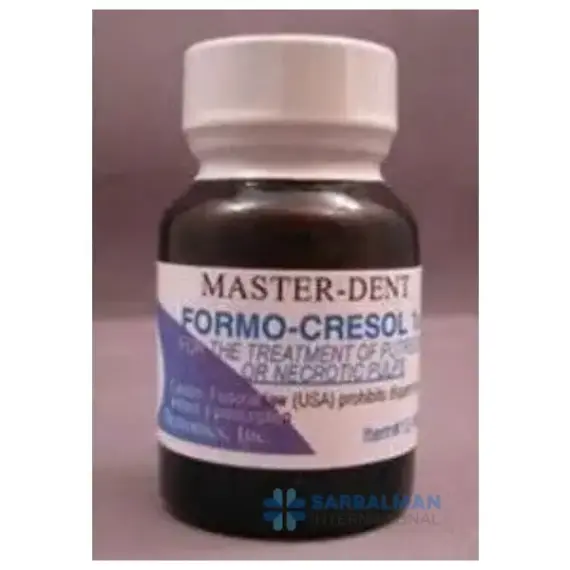Form cresol
Free!
Formocresol is a concentrated dental medicament for pulpotomy in primary teeth and short-term intracanal disinfection. Its formaldehyde–cresol formula fixes tissue and offers strong antimicrobial action, helping control infection when used in micro-doses under strict isolation. Chosen for specific cases where firm fixation is desired, it should be applied by trained clinicians following accepted protocols and considering modern bioactive alternatives.
Description
Formocresol is a dental medicament traditionally used for pulpotomy in primary teeth and as a temporary intracanal disinfectant. It is a blend of formaldehyde and cresol in a glycerin or water base. Applied in very small amounts on a cotton pellet, it fixes residual pulp tissue and provides strong antimicrobial activity. Because of its potency, it is intended for professional use only with careful isolation and minimal exposure times.
Key features and benefits:
• Powerful antimicrobial effect for infected primary molar pulps
• Tissue-fixing action that stabilizes remaining radicular pulp in pulpotomy
• Low viscosity for easy pellet wetting and controlled placement
• Long history of clinical use with well-documented techniques
Typical applications:
• Pulpotomy of cariously exposed primary teeth with radicular pulp vitality
• Short-term intracanal dressing in selected endodontic cases when strong disinfection is required
Comparison and clinical considerations:
• Compared with eugenol or calcium hydroxide dressings, formocresol offers stronger fixation and broader antimicrobial action, but lacks the dentin-inducing effect of calcium hydroxide or modern calcium-silicate cements.
• Many clinicians now prefer alternatives such as ferric sulfate or calcium-silicate materials for vital pulp therapy due to their bioactive healing potential.
• Because formaldehyde is a sensitizer and exposure should be minimized, strict rubber-dam isolation, micro-doses, and limited contact time are recommended according to accepted pulpotomy protocols.
Best-practice handling:
• Use a lightly moistened pellet—never dripping—to avoid excess.
• Place briefly on pulp stumps, then remove and seal with a suitable base and stainless-steel crown or restorative plan.
• Store tightly closed and away from heat; follow local regulations for hazardous substances.
• Not indicated for permanent teeth vital pulp therapy or where better biological alternatives are available.
Formocresol remains a practical option in specific clinical scenarios when decisive antimicrobial fixation is needed, provided it is used judiciously and in line with current professional guidelines.




